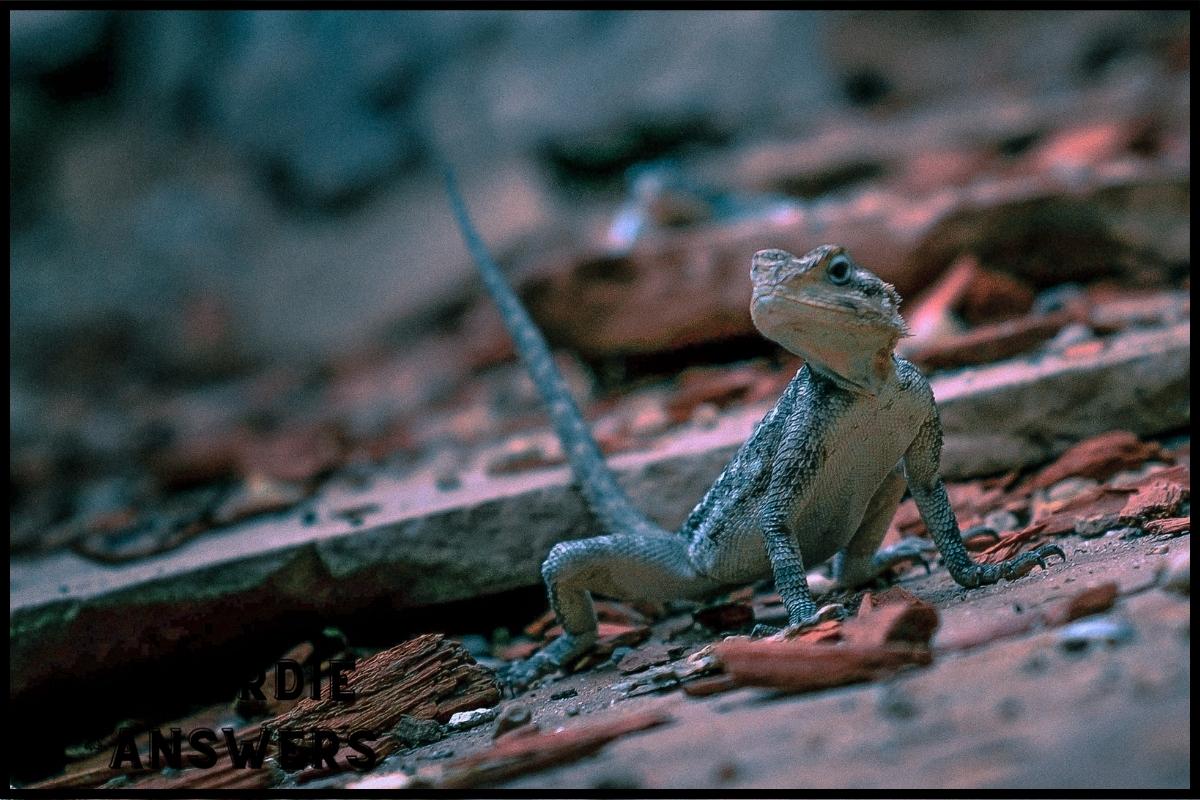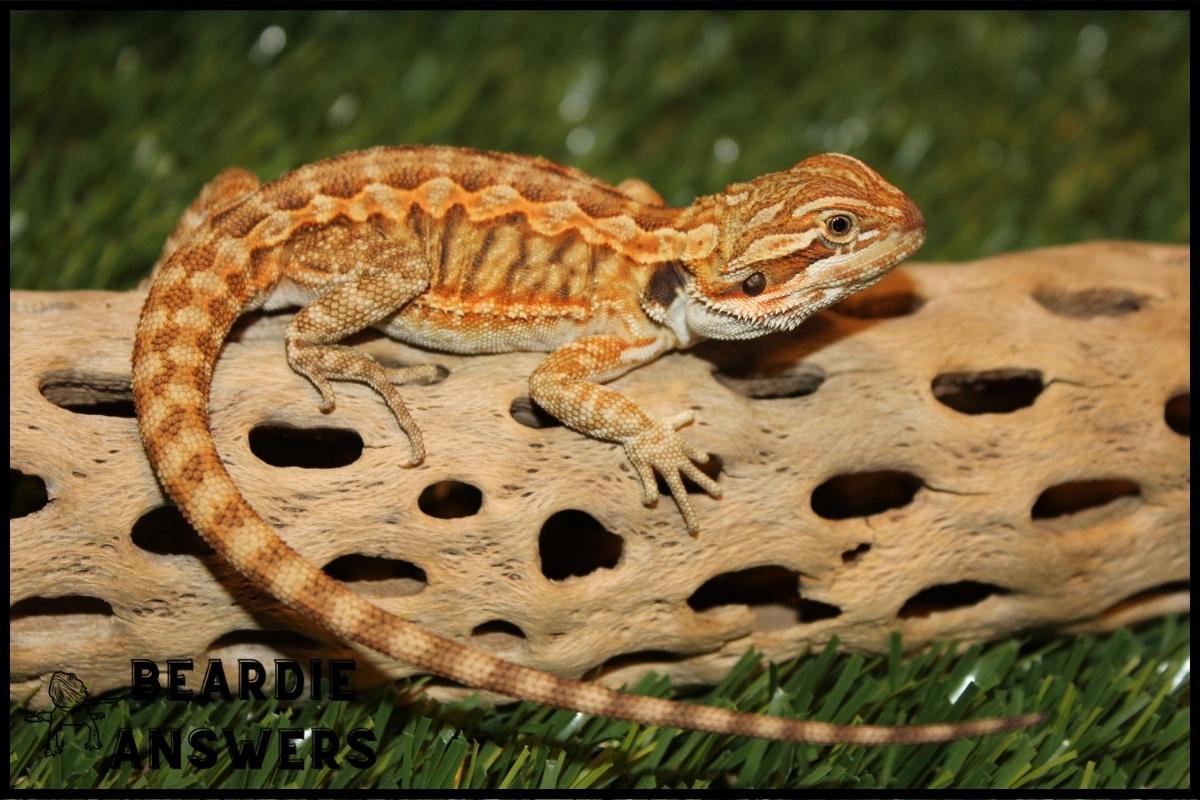Brumation is a natural phenomenon that some bearded dragons go through during the winter months. It is a period of dormancy that can last for several weeks or even months, during which the bearded dragon’s activity levels decrease, and they may stop eating and drinking. This is a normal behavior and should not be interrupted unless there are signs of illness.
What You'll Learn
What Is Brumation?
Brumation in bearded dragons is like a long winter’s nap – they go into dormancy when the temperatures drop and the days get shorter. This period of hibernation-like rest can last anywhere from two weeks to several months, depending on environmental cues such as temperature, light, humidity and food availability.
During this time their energy levels are low and activity decreases significantly; it’s not uncommon for them to sleep up to 20 hours a day! Signs that your dragon may be entering brumation include decreased appetite, less movement, more hiding or burrowing under substrates, sleeping longer periods of time during the day and even slight weight loss.
Some also display signs of aggression if handled too much during this period as their bodies need plenty of rest to prepare for springtime activities. Understanding these changes allows you to provide your scaly friend with an environment that mimics nature so they can have a successful brumation season.
With proper preparation and care they will emerge recharged and ready to bask in the sun once again!
Signs Of Brumation In Bearded Dragons
To understand the signs of brumation in bearded dragons, it’s important to have a basic understanding of what brumation is. As mentioned previously, brumation is a period of dormancy similar to hibernation that some bearded dragons go through during the winter months.
The following are key indicators that your beardie may be entering into this state:
- Eating Habits – Brumating bearded dragons will usually eat less or not at all for an extended period of time.
- Activity Levels – Bearded dragons typically become much more sluggish and inactive when going through brumation.
- Water Intake – A decrease in water intake can also indicate that your dragon is beginning to go through its annual sleep cycle.
- Temperature Regulation – Finally, they may seek out colder areas within their enclosure as they prepare to enter a prolonged period of restful sleep.
These indications should help you recognize if your pet lizard is getting ready to transition into brumation mode. Knowing these signs early on can allow you to better prepare them for the upcoming change by adjusting temperatures and other environmental factors accordingly.
With the right guidance, your beloved beardie can successfully navigate through this natural process with ease! Onward now, to understand why beardeds experience brumation…
Causes Of Brumation In Bearded Dragons
It is estimated that around 70% of bearded dragons will go through a period of brumation during the winter months. Brumation is similar to hibernation and can be triggered by natural factors such as temperature fluctuations, photoperiods (length of daylight), and food availability.
During this time, bearded dragons may become less active and require fewer meals than usual. For many species, cold temperatures act as a cue for entering into the dormant state.
It’s important to recognize these signs in your pet dragon so you can prepare accordingly for brumation. For example, providing them with an appropriate hiding spot or making sure their enclosure has sufficient insulation from any potential drops in temperature outside the tank.
If left unchecked, extreme temperatures combined with lack of food could lead to health issues down the line. As such, it’s important to create an environment where they are comfortable enough to enter into this natural process without stressing out too much about environmental conditions.
With proper preparation and monitoring throughout the season, your dragon should make it safely through its period of dormancy!
How To Prepare For Brumation
Brumation is a period of dormancy that bearded dragons experience during winter months. It’s important to prepare your dragon for brumation by making dietary and temperature changes.
Here are 4 key steps you can take to get your pet ready:
- Make Dietary Changes: You should start decreasing the amount of food you give your dragon about 8 weeks before brumation begins. This will help them slowly lose weight, so they don’t enter their dormancy too thin or overweight.
- Regulate Temperature: To encourage your dragon to begin brumating, lower daytime temperatures in its enclosure from 75°F/24°C down to 65°F/18°C over several weeks time. At night, drop temperatures even further but make sure it doesn’t go below 50°F/10°C for safety reasons.
- Provide Hiding Spots: Bearded dragons need somewhere comfortable and safe to hide while they sleep. Gather rocks, logs, plants and other items that provide adequate shelter as well as allow air circulation around them.
By following these simple tips and preparing ahead of time, you’ll be able to ensure that your dragon enters into brumation safely and smoothly.
Moving forward, it’s important to also consider how best to care for your pet during this restful season too!
Care During Brumation
Temperature regulation is important for bearded dragons during brumation, as their environment should remain at a steady, cool temperature.
Providing proper nutrition and hydration is also necessary, as beardies tend to eat less during this time.
Lastly, safety and monitoring should be a priority, to make sure the dragon is healthy and brumating properly.
Temperature Regulation
When it comes to caring for bearded dragons during brumation, temperature regulation is key.
During this period of dormancy, the environment should be kept cooler than usual and light levels must be properly managed.
In addition, humidity control should also be taken into consideration in order to ensure that your pet remains comfortable throughout its hibernation experience.
Make sure you have all these elements covered before allowing your dragon to enter a state of brumation!
Nutrition And Hydration
Once the environmental factors are taken care of, it’s important to make sure your bearded dragon is getting proper nutrition and hydration during brumation.
A light diet should be maintained for them – think small insects like crickets or mealworms.
It’s also essential that they get enough water. Make sure to check their water bowl daily, as dragons may not drink often when in a state of dormancy.
By keeping an eye on these two key elements, you can help ensure your pet stays healthy throughout its hibernation period!
Safety And Monitoring
Now that the climate control and diet changes have been discussed, it’s important to make sure your bearded dragon is safe and monitored during brumation.
This means checking their enclosure regularly for any signs of injury or illness and making necessary adjustments if needed.
Additionally, you should also be aware of any potential dangers in the area such as other animals who could potentially harm your pet.
Taking these extra steps can help keep your dragon healthy and happy while they’re hibernating!
When Brumation Is Complete
As the cold winter months settle in, many bearded dragons enter a state of brumation – similar to hibernation. After weeks or even months of dormancy, it is time for them to emerge as spring approaches. Breeding triggers and environmental factors play key roles in when this process begins and ends.
When a bearded dragon’s body temperature drops below 65 degrees Fahrenheit, they may begin their period of brumation. During this time, they become inactive and slow down physiological processes such as digestion, metabolism and growth. This can last anywhere from two weeks to several months depending on the individual. When temperatures rise back up above 75-78°F, signals are sent to the brain prompting them to exit brumation mode.
| Breeding Triggers | Environmental Factors | Other Triggering Cues |
|---|---|---|
| Photoperiods | Temperature Change | Hunger |
| Pheromones | Humidity | Stress |
The end of a beardie’s bout with brumation varies greatly since there are multiple influencing factors at work. Mating season plays an important role by providing an internal biological prompt which helps determine when activity levels start increasing again. The change in ambient temperature outside also contributes heavily; once conditions become more favorable outdoors that indicates it is safe for your pet reptile to leave its den and return back into its active routine. Lastly hunger cues will usually be present during the transition out of dormancy; if food is readily available but not being consumed then owners should have further concerns about their pet’s health status following brumation.
Once all these pieces come together signaling successful completion of the dormant stage, a bearded dragon can finally resume its typical daily activities! From basking under heat lamps to scurrying around looking for bugs – no matter how long they were asleep they will soon get back into full swing within days after emerging from brumation mode.
Conclusion
Brumation can be a stressful time for bearded dragon owners. It’s important to monitor your pet closely and provide the right kind of care during this period in order to ensure their well-being.
Brumation is like a long sleep that helps them conserve energy, but it also allows them to wake up refreshed and ready for another season of growth and exploration.
Imagining my own bearded dragon coming out of brumation with newfound vigor brings me joy. Knowing I did everything I could to keep him safe while he slept makes me feel proud as an owner.
Taking proper care of your beloved beardie will help them come out of brumation successfully every year!

Hi! My name is Bryan, I am the “one behind the words” here are BeardieAnswers.com. I believe that providing quality care and nutrition is the best way to ensure the health of your pet. Every beardie is special and deserves the best care and attention. If you have questions about your bearded dragon, please don’t hesitate to ask! View My Full Author Page




